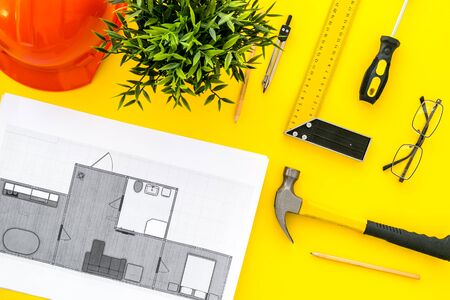Introduction to Colour Schemes in UK Interior Design
Colour palettes play a pivotal role in shaping the character and mood of British living spaces. In the UK, interior design is more than just aesthetics; it reflects a rich tapestry of cultural heritage, historical context, and evolving social trends. From the stately homes adorned with deep heritage hues to the fresh, minimalist tones favoured in modern city apartments, colour choices are deeply intertwined with the nation’s identity. The damp climate and unique quality of natural light across Britain also influence how colours are perceived and used within interiors. Traditionally, palettes have drawn inspiration from classic British landscapes and historic architecture, while contemporary schemes increasingly embrace global influences and bold experimentation. Understanding these factors is essential for anyone considering a new look for their home—whether you’re drawn to time-honoured elegance or sleek modernity.
2. Defining Traditional British Colour Schemes
When discussing traditional colour schemes in UK interior design, one cannot ignore the distinctive palette that has defined British homes for centuries. Classic British interiors often feature a harmonious blend of muted greens, deep reds, rich navies, and subtle neutrals. These shades evoke a sense of timeless elegance and understated sophistication, drawing inspiration from the country’s historic manor houses, Georgian terraces, and Victorian townhouses.
Heritage paint brands such as Farrow & Ball play an instrumental role in preserving and promoting these traditional hues. Their carefully curated collections are rooted in historical research and reflect authentic British aesthetics. For example, colours like Hague Blue, Rectory Red, and Calke Green have become synonymous with period properties and stately homes across the UK.
Below is a comparison table highlighting some of the most iconic traditional British colours:
Colour Name |
Description |
Typical Application |
|---|---|---|
| Muted Green (e.g., Calke Green) | Earthy, calming green with grey undertones | Living rooms, studies, kitchens |
| Deep Red (e.g., Rectory Red) | Rich, warm red evoking heritage charm | Dining rooms, hallways |
| Navy (e.g., Hague Blue) | Classic dark blue with depth and intensity | Bedrooms, libraries, front doors |
| Warm Neutrals (e.g., Elephant’s Breath) | Sophisticated greys and taupes with warmth | Reception rooms, corridors |
The enduring popularity of these palettes is closely tied to Britain’s architectural legacy and preference for interiors that feel both comfortable and refined. By leveraging classic tones from established paint houses like Farrow & Ball, homeowners can achieve an authentic British look that transcends fleeting trends while enhancing property value—a factor increasingly considered by investors and buyers alike.
![]()
3. Modern Colour Trends Shaping UK Homes
In recent years, UK interior design has seen a distinct shift towards modern colour schemes that reflect both global trends and British sensibilities. The embrace of contemporary palettes signals an appetite for fresh aesthetics, functionality, and individuality in the home. Minimalist neutrals, bold feature walls, and Pantone-inspired tones are now at the forefront of British interiors. Below is an analysis of these popular choices:
| Trend | Description | Key UK Application | Pantone Influence |
|---|---|---|---|
| Minimalist Neutrals | Sleek whites, soft greys, and beige tones provide a clean backdrop that enhances space and natural light. | Favoured in open-plan flats and period homes to create a sense of calm and sophistication. | Pantone’s ‘White Sand’ and ‘Ultimate Gray’ set the tone for understated elegance. |
| Bold Feature Walls | Deep blues, forest greens, or dramatic charcoals used on single walls or alcoves add personality without overwhelming a room. | Popular in living rooms and master bedrooms, often paired with heritage mouldings for a modern twist on tradition. | Pantone’s ‘Classic Blue’ and ‘Greenery’ inspire these rich accents. |
| Pops of Colour | Vibrant shades—mustard yellow, blush pink, or teal—introduced via accessories, furnishings, or statement art pieces. | Used across kitchen splashbacks or as accent furniture to inject energy into neutral settings. | Pantone’s annual ‘Colour of the Year’ guides these playful choices. |
The Influence of Contemporary Culture on UK Palettes
The adoption of modern colour schemes in British homes often mirrors wider lifestyle aspirations: sustainability, wellbeing, and a desire for spaces that promote relaxation. Social media trends—especially those seen on platforms like Instagram and Pinterest—have further accelerated the popularity of soft earth tones and eco-conscious greens. At the same time, the British fondness for individuality encourages experimenting with daring hues alongside traditional architecture.
Why These Trends Work Best in the UK Context
The unpredictable British weather means that light-enhancing neutrals are especially valued for their ability to brighten interiors all year round. Meanwhile, bold colour accents provide warmth and visual interest during long winters. Ultimately, successful modern palettes are those that blend practicality with personal expression—a hallmark of UK interior design evolution.
4. Factors Influencing Choice: Lifestyle, Property Type, and Regional Differences
When it comes to selecting between traditional and modern colour schemes in UK interior design, the decision is rarely one-size-fits-all. Homebuyers and renovators must consider a blend of factors that shape their choices—most notably lifestyle preferences, the age and type of property, and distinctive regional tastes that vary from metropolitan London to the pastoral Cotswolds.
Lifestyle Needs: Functionality Meets Aesthetics
Modern households often prioritise open-plan living, minimal clutter, and spaces that support flexible working or family life. As such, contemporary colour palettes—think muted greys, whites, and bold accent hues—are popular for creating light-filled, adaptable environments. Conversely, those seeking warmth and cosiness may gravitate towards traditional schemes featuring rich navies, heritage greens, or warm neutrals that evoke comfort and nostalgia.
Property Age and Type: Respecting Character vs Embracing Change
| Property Type | Preferred Colour Scheme | Considerations |
|---|---|---|
| Victorian/Edwardian Terraces | Traditional (deep reds, forest greens) | Highlights period features; suits ornate details |
| 1930s Semi-Detached | Mix of both | Combines classic with fresh updates for family living |
| Modern New-Builds | Modern (cool greys, crisp whites) | Makes most of natural light; complements minimalist design |
Retaining authenticity in older homes often means respecting original mouldings or fireplaces with traditional tones. Meanwhile, modern builds present a blank canvas ideal for sleek, up-to-date palettes.
Regional Differences: From Urban Chic to Rural Charm
The UK’s diversity is mirrored in its interior trends. In central London, buyers may favour bold modern schemes—monochrome contrasts or industrial-inspired hues—that reflect urban energy. In contrast, regions like the Cotswolds champion softer traditional palettes inspired by local stonework and countryside landscapes: think sage greens, ochres, and muted blues.
Regional Preferences Table
| Region | Popular Scheme |
|---|---|
| London (Urban) | Sleek modern neutrals with statement colours |
| Cotswolds (Rural) | Naturally-inspired traditional tones |
| Northern Cities (e.g., Manchester) | Darker heritage colours mixed with contemporary accents |
Conclusion: Tailoring Colour Choices to Context
The most successful interior designs balance personal taste with practical realities—be it the era of your property or the vibe of your local area. Ultimately, whether opting for traditional depth or modern simplicity, aligning colour choices with lifestyle needs and regional character ensures your home feels both stylish and genuinely liveable.
5. Impact on Property Value and Market Appeal
When it comes to property investment in the UK, colour schemes are more than just an aesthetic choice—they can significantly influence valuation, rental yield, and buyer or tenant psychology. The impact of traditional versus modern palettes extends beyond personal taste, shaping how potential buyers and renters perceive a property’s value and liveability.
Influence on Valuation
Estate agents across the UK consistently report that neutral and modern colour schemes often result in higher property valuations. These tones create a blank canvas effect, allowing viewers to imagine their own furnishings and style in the space. In contrast, bold traditional colours may limit the appeal to niche markets, potentially reducing market value unless carefully executed in period homes where authenticity is prized.
Rental Yield Considerations
For landlords, maximising rental income depends on broad market appeal. Modern schemes—think soft greys, whites, and muted pastels—tend to attract a wider tenant pool, particularly among younger professionals seeking contemporary living spaces. Traditional schemes with deeper hues may resonate in upmarket or heritage locations but risk narrowing your audience.
| Colour Scheme | Potential Impact on Value | Rental Yield Outlook | Target Demographic |
|---|---|---|---|
| Modern (Neutral/Minimalist) | +2–5% (higher resale value) | High (broad appeal) | Younger buyers, professionals |
| Traditional (Rich/Dark Tones) | Flat or -1% (unless period home) | Moderate (niche appeal) | Mature buyers, heritage enthusiasts |
Buyer Psychology in the UK Market
British buyers are often influenced by first impressions; a light, airy palette can make rooms feel larger and more inviting during those crucial viewing moments. Conversely, strong traditional hues might evoke warmth and character but risk overwhelming smaller spaces—especially in classic terraced or semi-detached homes found throughout London, Manchester, and Edinburgh. Investors should weigh local market trends: while London’s prime postcodes might embrace bold sophistication, commuter belts favour understated elegance for mass-market resale.
The bottom line: aligning your interior colour strategy with current UK market preferences not only enhances immediate appeal but also underpins long-term capital growth and rental performance.
6. Making the Right Choice: Blending Tradition with Modernity
Striking a balance between traditional and modern colour schemes is increasingly popular within UK interior design, allowing homeowners to enjoy both the timeless elegance of heritage hues and the freshness of contemporary palettes. The secret lies in thoughtful integration—melding classic elements with modern touches to create interiors that are sophisticated yet inviting. Below, we provide practical guidance and real-world examples from the UK property market to help you achieve this harmonious blend.
Guidelines for Combining Traditional and Modern Elements
- Start with a Neutral Base: Use classic neutrals like warm greys, off-whites, or muted taupes as your canvas. These shades provide flexibility to layer both traditional and modern accents.
- Layer Colour Accents: Incorporate traditional deep blues or heritage greens through soft furnishings or feature walls, while introducing modern pops of blush pink or mustard yellow in accessories such as cushions or artwork.
- Mix Materials: Combine period features like decorative cornices or wood panelling with sleek, modern finishes—think matte black hardware or minimalist light fittings—for a dynamic yet cohesive look.
Real Examples from the UK Market
| Property Style | Traditional Element | Modern Twist |
|---|---|---|
| Victorian Terrace (London) | Bespoke wainscoting painted in Farrow & Balls Hague Blue | Contemporary geometric pendant lighting and abstract art prints |
| Cotswold Cottage | Original stone fireplace and exposed beams | Sleek furniture in neutral tones, metallic accents in décor |
| City Apartment (Manchester) | Restored sash windows with classic white frames | Bold feature wall in olive green paired with Scandinavian-inspired furnishings |
Tips for a Timeless Yet Appealing Interior
- Avoid overwhelming either style; let one lead while the other complements.
- Select quality over quantity when adding statement pieces—one antique sideboard can ground an otherwise modern space.
- Echo colour tones across old and new elements for visual harmony.
Ultimately, blending tradition with modernity offers enduring appeal and broad market desirability—attributes especially valued in the UK’s ever-evolving property landscape. By thoughtfully combining elements from both worlds, you can create interiors that are not only stylish but also stand the test of time.


